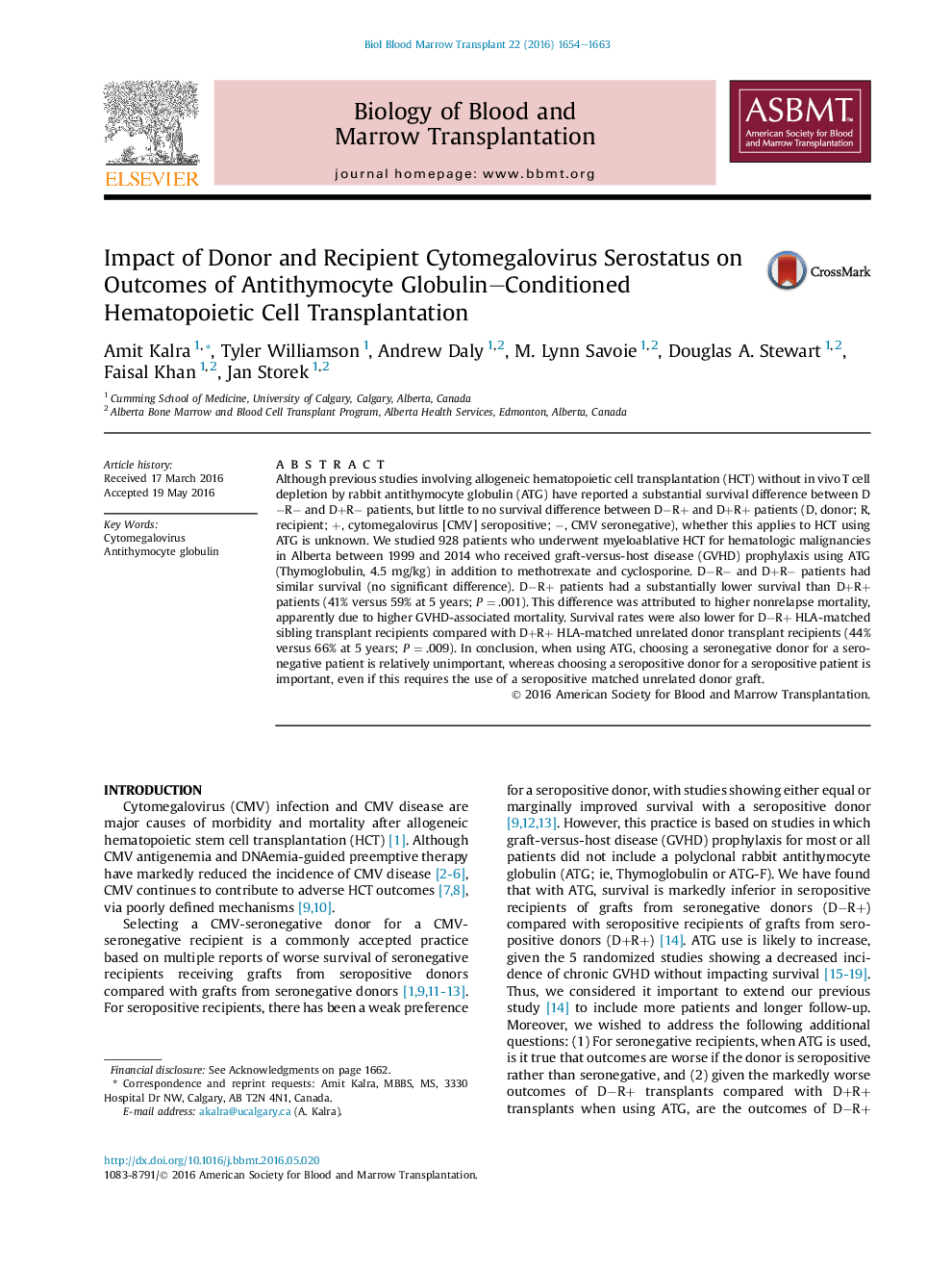| کد مقاله | کد نشریه | سال انتشار | مقاله انگلیسی | نسخه تمام متن |
|---|---|---|---|---|
| 2101285 | 1546250 | 2016 | 10 صفحه PDF | دانلود رایگان |
• When using ATG, D−R+ patients have lower survival than D+R+ patients.
• D−R+ matched siblings have lower survival compared with D+R+ MUD graft recipients.
• The lower survival of D−R+ patients is due to higher GVHD-associated mortality.
Although previous studies involving allogeneic hematopoietic cell transplantation (HCT) without in vivo T cell depletion by rabbit antithymocyte globulin (ATG) have reported a substantial survival difference between D−R− and D+R− patients, but little to no survival difference between D−R+ and D+R+ patients (D, donor; R, recipient; +, cytomegalovirus [CMV] seropositive; −, CMV seronegative), whether this applies to HCT using ATG is unknown. We studied 928 patients who underwent myeloablative HCT for hematologic malignancies in Alberta between 1999 and 2014 who received graft-versus-host disease (GVHD) prophylaxis using ATG (Thymoglobulin, 4.5 mg/kg) in addition to methotrexate and cyclosporine. D−R− and D+R− patients had similar survival (no significant difference). D−R+ patients had a substantially lower survival than D+R+ patients (41% versus 59% at 5 years; P = .001). This difference was attributed to higher nonrelapse mortality, apparently due to higher GVHD-associated mortality. Survival rates were also lower for D−R+ HLA-matched sibling transplant recipients compared with D+R+ HLA-matched unrelated donor transplant recipients (44% versus 66% at 5 years; P = .009). In conclusion, when using ATG, choosing a seronegative donor for a seronegative patient is relatively unimportant, whereas choosing a seropositive donor for a seropositive patient is important, even if this requires the use of a seropositive matched unrelated donor graft.
Journal: - Volume 22, Issue 9, September 2016, Pages 1654–1663
